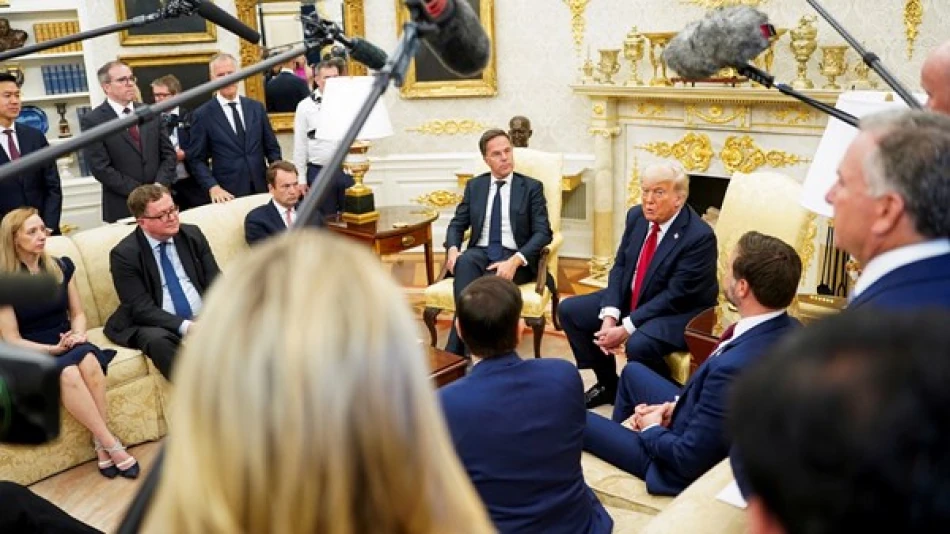
Trump Threatens Steep Tariffs on Russia, Escalating Economic Tensions
Trump Threatens Massive Russian Tariffs as Ukraine War Leverage Tool
President Donald Trump has escalated economic pressure on Russia by threatening to impose sweeping tariffs on Russian goods within 50 days unless Moscow agrees to end the ongoing conflict in Ukraine. The ultimatum, delivered during a White House meeting with NATO Secretary-General Mark Rutte, represents a significant shift toward trade-based diplomacy in one of the world's most consequential geopolitical crises.
The 50-Day Ultimatum
Speaking from the Oval Office, Trump announced that the United States would impose "extremely high tariffs" on Russian products if no agreement is reached to halt the Ukraine crisis. While the president declined to specify exact percentages, the threat suggests a comprehensive trade war approach that could severely impact Russian exports to the American market.
Trump framed the strategy as economic warfare, declaring that trade represents a "wonderful way to end wars." This philosophy marks a departure from traditional military aid packages and sanctions, instead leveraging America's massive consumer market as a diplomatic weapon.
Strategic Implications for Global Markets
Commodity Market Disruption
Russian exports to the US, while already limited by existing sanctions, include critical commodities such as oil, metals, and agricultural products. Massive tariffs could create supply chain disruptions and price volatility across global markets, particularly affecting energy and raw material sectors that remain interconnected despite geopolitical tensions.
Dollar Strengthening Potential
The threat alone could strengthen the US dollar as markets anticipate reduced Russian trade flows and increased American economic isolation of Moscow. This dynamic historically benefits US-based investors while creating headwinds for emerging market currencies and commodities priced in dollars.
Historical Context and Precedent
Trump's tariff-focused approach echoes his previous trade wars with China, where import duties reached 25% on hundreds of billions in goods. However, applying this strategy to an active military conflict represents uncharted territory, blending economic nationalism with crisis diplomacy.
The timeline coincides with ongoing NATO discussions about long-term Ukraine support, suggesting coordination between American trade policy and alliance strategy. Unlike previous sanctions that targeted specific industries or individuals, blanket tariffs would affect all Russian commercial activity with the US market.
Market and Investor Outlook
Financial markets will likely monitor the 50-day deadline closely, with potential volatility in energy futures, defense stocks, and European equities most exposed to Russian trade. The threat creates both opportunity and risk for investors positioned in sectors that could benefit from reduced Russian competition or suffer from supply chain disruptions.
Currency traders may view the ultimatum as dollar-bullish, particularly if it signals broader American willingness to weaponize trade relationships. However, the effectiveness of tariffs in ending military conflicts remains untested, creating uncertainty about long-term market impacts.
Diplomatic Gamble
By setting a specific timeline and involving NATO leadership in the announcement, Trump has created a high-stakes diplomatic moment that could either accelerate peace negotiations or further entrench the conflict. The success of this trade-based approach will likely influence how future administrations handle similar international crises, potentially establishing tariffs as a standard tool of American foreign policy.
Most Viewed News

 Layla Al Mansoori
Layla Al Mansoori






